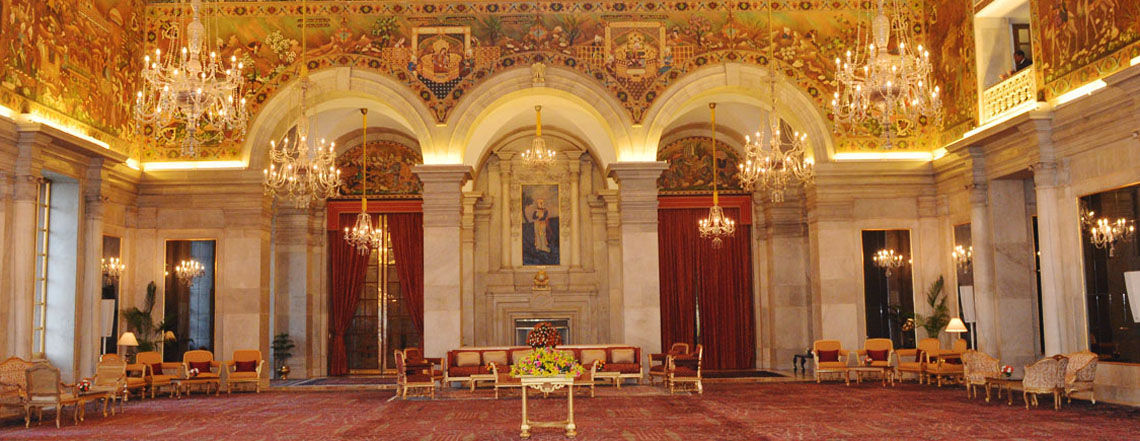Presidential Residences And Symbols Of Power.
Authored by Beyonddennis
Presidential residences are more than just places where heads of state live and work; they are potent symbols of national sovereignty, stability, and the democratic or governmental ideals a nation espouses. These grand structures, often steeped in history, serve as focal points for national identity and international diplomacy, embodying the power and prestige of the highest office in the land. Beyond their practical functions, they stand as physical manifestations of a nation's enduring strength and heritage.
One of the most iconic presidential residences globally is the White House in Washington, D.C., the official residence and principal workplace of the President of the United States. Designed by Irish-born architect James Hoban, its cornerstone was laid in 1792, and President John Adams and his wife, Abigail, were its first residents in 1800. The building's neoclassical architecture, with its distinctive white Aquia Creek sandstone, has come to symbolize American democracy and the peaceful transfer of power. Each room, from the Oval Office to the East Room, carries a weight of historical decisions and significant events, making it a living museum of American political life.
Across the Atlantic, the Élysée Palace serves as the official residence of the President of the French Republic. Located on the Rue du Faubourg Saint-Honoré in Paris, this elegant mansion, completed in 1722, has been the seat of French presidential power since the Second Republic. Its formal gardens and opulent interiors reflect France's rich history and cultural heritage. The Élysée is not merely a residence but a vibrant center for diplomacy, hosting state dinners, official receptions, and critical political meetings that shape national and international policy.
Further east, the Moscow Kremlin stands as a monumental complex that includes the official residence of the President of Russia. This historic fortified complex, with its distinctive red walls and golden domes, has been the heart of Russian power for centuries, predating the modern presidency. Its imposing architecture and historical depth evoke a sense of enduring authority and national resilience. The Kremlin's symbolic power is immense, representing the vastness and historical continuity of the Russian state.
In India, Rashtrapati Bhavan, the official residence of the President of India, is an architectural marvel that symbolizes the nation's democratic aspirations and its journey from colonial rule to independence. Designed by British architects Sir Edwin Lutyens and Herbert Baker, it was completed in 1929 and originally served as the Viceroy's House. Post-independence, it was transformed into the presidential palace, its grandeur now reflecting the sovereign will of the Indian people. Its massive scale, intricate details, and sprawling gardens encapsulate the diversity and ambition of one of the world's largest democracies.
Beyond the architectural grandeur of these residences, various symbols of power are inextricably linked to the presidential office. The presidential seal, for instance, is a ubiquitous emblem that represents the authority and legitimacy of the presidency. It appears on official documents, podiums, and presidential aircraft, serving as a constant visual reminder of the office's stature. Similarly, the presidential flag or standard, often displayed prominently at official events and on presidential vehicles, signifies the presence of the head of state and the power they wield.
The presidential motorcade, with its highly secure vehicles and escort, is another tangible symbol of power and protection, emphasizing the importance and vulnerability of the head of state. These highly coordinated movements, often involving significant logistical planning and security measures, project an image of formidable authority and control. The very act of a president addressing the nation from a specific, recognizable lectern or within a particular room reinforces the solemnity and weight of their pronouncements.
Even specific rituals and protocols surrounding the presidency contribute to its symbolic power. The playing of a national anthem upon the president's arrival, the formal greetings with foreign dignitaries, and the precise choreography of state visits all serve to elevate the office and reinforce its significance on both national and international stages. These elements, combined with the physical presence of the presidential residences, create a comprehensive tapestry of symbols that underscore the power, responsibility, and national identity vested in the head of state.
In essence, presidential residences and their associated symbols are far more than just functional spaces or decorative emblems. They are dynamic entities that reflect a nation's history, aspirations, and political values. They serve as constant reminders of the continuum of governance, the weight of leadership, and the enduring spirit of the nations they represent.
